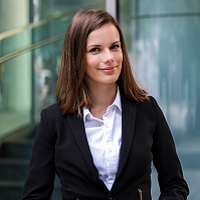Market Reactions After Rate Cuts: What Investors Should Know

An Overview of Recent Market Movements
The recent decision by the U.S. Federal Reserve to implement a noteworthy rate cut has sparked discussions among investors about market volatility. Contrary to the chaotic reactions some expected, the market movements were surprisingly calm. However, this doesn’t necessarily signal a long-term trend, as market dynamics are continuously changing.
Understanding the Rate Cut
The Fed’s choice to lower rates by half a percentage point caught many off guard. In the lead-up to this decision, traders were confronted with significant uncertainty, with varying expectations regarding the extent of the cut. Traditionally, changes in interest rates trigger considerable market reactions, prompting many to ponder what the future holds.
Immediate Market Reactions
In response to the announcement, stock prices saw a considerable reversal in momentum. Although traders anticipated the S&P 500 would reflect a dramatic response, the index ultimately closed the session slightly down, ending a streak of gains. Experts like Brian Jacobsen pointed out that this apparent calm might be misleading, as future fluctuations could emerge as more economic data comes into view.
Paying Attention to Data and Future Trends
Investors will be closely watching upcoming economic indicators, such as jobless claims, for clues that could influence market direction. Jacobsen highlighted that the Fed’s current approach appears to focus on swift adjustments to stay ahead of economic changes. As a result, the repercussions of this rate cut may ripple through various asset classes, drawing further attention to the interconnected nature of global markets.
Interpreting Market Responses
Stock options had forecasted a movement of over 1% in the S&P 500. However, the outcomes showed a market reacting more to existing trends rather than immediate shifts. Many had expected greater volatility due to the Fed's announcements; nevertheless, there were noteworthy changes in bond yields and pricing behaviors across various sectors.
Bond Market Developments
In the immediate aftermath, bond yields saw a sharp increase. This adjustment reflected a change in expectations surrounding inflation and economic growth, indicating that the markets are recalibrating after the announcement. Although the dollar index experienced some fluctuations, it ultimately regained stability, suggesting underlying strength despite the initial decline.
Wider Market Implications
While small-cap stocks initially hinted at optimism following the rate cut, the mixed performance raises questions about sustainability. Smaller companies, often dependent on external financing, generally gain from lower rates. Analysts believe the recent rebound reflects market hopes for continued support from the Fed in the near future.
Considering Fed Strategies
Fed Chair Jerome Powell described this rate cut as a strong beginning to preserving economic strength. However, due to the substantial nature of this cut, some analysts approach the situation with caution. Concerns persist regarding potential profit-taking among investors who anticipated this move and might reconsider their positions going forward.
Looking Ahead: Potential Scenarios
As the financial landscape adapts to these changes, it’s wise for investors to stay alert. The ongoing shifts in bond yields, stock movements, and currency fluctuations highlight a market in transition. Successfully navigating these changes demands strategic planning and adaptability.
In conclusion, while the Fed's rate cut stirred expectations for market shifts, the immediate outcomes revealed a more composed environment than anticipated. As new economic indicators emerge, investors should brace for potential volatility and adjust their strategies as needed.
Frequently Asked Questions
What triggered the recent Fed rate cut?
The Fed sought to boost economic activity amid ongoing market uncertainties, choosing a significant reduction to promote borrowing and investment.
How did the market react to the rate cut announcement?
Initially, markets responded with surprising calm despite expectations of increased volatility; key indexes experienced slight declines after the announcement.
What effects do lower interest rates usually have on small-cap stocks?
Lower rates typically cut borrowing costs for smaller companies, which can improve profitability and lead to greater investor interest in these stocks.
Which economic indicators should investors monitor after the rate cut?
Investors should pay close attention to jobless claims, inflation rates, and any forthcoming economic reports that could shed light on market direction.
Will the rate cut influence international markets?
Yes, decisions made by the Fed can have ripple effects on global foreign exchange and bond markets, impacting international economic dynamics.
About The Author
Contact Kelly Martin privately here. Or send an email with ATTN: Kelly Martin as the subject to contact@investorshangout.com.
About Investors Hangout
Investors Hangout is a leading online stock forum for financial discussion and learning, offering a wide range of free tools and resources. It draws in traders of all levels, who exchange market knowledge, investigate trading tactics, and keep an eye on industry developments in real time. Featuring financial articles, stock message boards, quotes, charts, company profiles, and live news updates. Through cooperative learning and a wealth of informational resources, it helps users from novices creating their first portfolios to experts honing their techniques. Join Investors Hangout today: https://investorshangout.com/
The content of this article is based on factual, publicly available information and does not represent legal, financial, or investment advice. Investors Hangout does not offer financial advice, and the author is not a licensed financial advisor. Consult a qualified advisor before making any financial or investment decisions based on this article. This article should not be considered advice to purchase, sell, or hold any securities or other investments. If any of the material provided here is inaccurate, please contact us for corrections.
